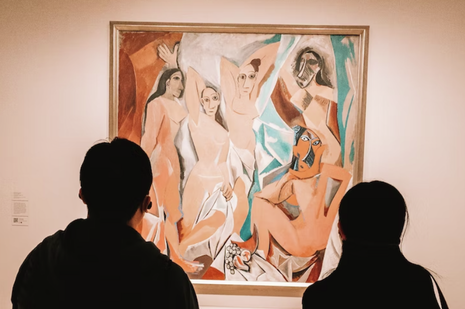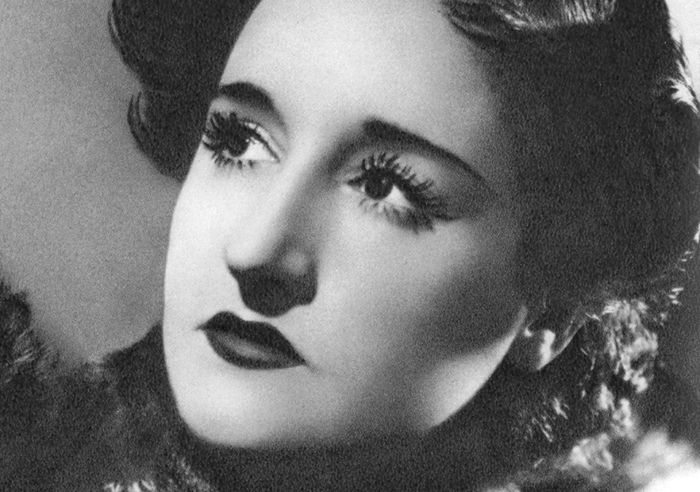Minotaurs, women and war: Picasso’s uneasy legacy told through the Fitzwilliam museum
Ben Bateman discusses the uneasy legacy of Pablo Picasso through looking at some of the artist’s pieces on display in the Fitzwilliam museum

Pablo Picasso was a man of various talents and morbid mental struggles, celebrated as one of the 20th century’s greatest artists. On the 50th year since his passing in 1973, what are we to make of the man and his work: particularly those that have made their way through the prestigious doors of Cambridge’s very own Fitzwilliam Museum?
Found on Trumpington Street near Peterhouse, The Fitzwilliam Museum is celebrated today as having one of the greatest collections of artefacts in the United Kingdom outside of London, housing half a million works of art and masterpieces. Since 1816, the museum has had items from some of the most influential academics, artists and writers from around the world, including Hardy, Turner, Monet, and of course, Picasso.
“The artist is sadly another controversial creator whose work is difficult to separate from his tumultuous life”
The man who would become perhaps the most discussed Cubist of all time was born in 1881 to a middle-class artist family in the South of Spain. From a young age, Picasso would sketch and paint whenever possible, having a natural talent that impressed his father, who would sometimes encourage Picasso to finish his paintings for him. It was not until around 1905 however, that Picasso adopted the Cubist style we predominantly know him for today. Somewhere between his sombre “Blue Period” (1901–4) and comparatively more uplifting “Rose period” (1904–6), did the value of the space and shape rival traditional means of painting in his work. But this style came truly into fruition during his interest for Primitivism and African Art in the 1910s.
One of such paintings includes the Fitzwilliam’s portrait of Fernande Olivier, “Cubist Head” (1909–10), which was donated anonymously to the museum in 1974, a year after Picasso’s death. Typical of work from this period, Picasso analytically breaks down Olivier, into what he saw as the essential spatial components which made up her face. The oil on canvas is an assortment of squares, triangles and harsh angular lines, forming closed eyes and mouth. The portrait of Olivier, Picasso’s first muse, is just one of approximately 60 other portraits.
However, unfortunately for those of us who engage with Picasso, the artist is sadly another controversial creator whose work is difficult to separate from his tumultuous life. After seven years of a controlling and tempestuous relationship, Olivier and Picasso separated, with Picasso opting to find a new muse and lover, a set of actions that characterised much of the painter’s life. Though a terrific sculptor and painter, the same can’t be said for Picasso’s role as a partner to the many women who appear across his work.
Another of Picasso’s muses, and unfortunate lovers, is Dora Maar; a portrait of whom, entitled “Portrait of Dora Maar”, was also lent anonymously to the Fitzwilliam Museum. Henrietta Theodora Markovitch, or Dora Maar, became Picasso’s main muse between 1936 and 1937, encouraging such works as another more famous “Portrait of Dora Maar” and “The Weeping Woman”. The turbulence that characterised Picasso’s relationship with Olivier was also true for Picasso and Maar. Maar at one point told US writer James Lord how “All (Picasso’s) portraits of me are lies. They’re Picassos. Not one is Dora Maar.”
“There is still value to be found in the works of Picasso that presents and focuses on the emotional turmoil of both himself and the women he engaged with”
Many have pointed out the quality of sadness that follows the demeanour of Maar across Picasso’s various artistic renditions of her, arguing that this sadness stems from both the civil war wreaking havoc on Picasso’s home soil and the relationship between Picasso and women. While these are merely speculations, and perhaps unfair readings of Picasso, what can be derived is how the painting’s colours resemble his more popular 1937 piece “Guernica” which features only tones of blue, black, and white to capture the chaos of the aforementioned Spanish civil war.
In his final years, Picasso said something startling while reflecting on his life which may help admirers of the artist understand the way that the chaos of both political and domestic life spilled into his work: “If all the ways I have been along were marked on a map and joined up with a line, it might represent a Minotaur.”
The minotaur as a symbol can be seen throughout Picasso’s work going back to the 1920s. To Picasso, the minotaur represents both sexual monstrosity and an artist in itself – a reconfiguration of man and beast. The Fitzwilliam’s “Minotauromachy” (1934–5), for instance, is an etching that depicts the creature in battle, while looming over a female matador who lays beneath his wide and monstrous head. In addition, the woman has been compared to one of Picasso’s mistresses at the time, who was in the midst of uncertainty around her pregnancy. In this painting, Picasso seems to acknowledge his inhumane treatment of his romantic partners, wishing that the figure in the bottom left were able to emerge out and into the real world, enlightening and redeeming him from the demons inside of him.
So as we draw near to the end of this discussion, as well as the 50th anniversary of Picasso’s passing, we would be forgiven for seeing one of the 20th century’s greatest artists in an unfavourable light, as so did many of the people around him. In his final years and between bouts of depression throughout his life, the artist likely thought of himself unfavourably as well. But for contemporary fans and Fitzwilliam museum visitors, there is still value to be found in the works of Picasso that presents and focuses on the emotional turmoil of both himself and the women he engaged with. It is simply a shame that the man who conveyed and depicted these unpleasant realities was also, in many cases, the arbiter.
 News / Cambridge postgrad re-elected as City councillor4 May 2024
News / Cambridge postgrad re-elected as City councillor4 May 2024 News / Gender attainment gap to be excluded from Cambridge access report3 May 2024
News / Gender attainment gap to be excluded from Cambridge access report3 May 2024 Comment / Accepting black people into Cambridge is not an act of discrimination3 May 2024
Comment / Accepting black people into Cambridge is not an act of discrimination3 May 2024 News / Academics call for Cambridge to drop investigation into ‘race realist’ fellow2 May 2024
News / Academics call for Cambridge to drop investigation into ‘race realist’ fellow2 May 2024 News / Some supervisors’ effective pay rate £3 below living wage, new report finds5 May 2024
News / Some supervisors’ effective pay rate £3 below living wage, new report finds5 May 2024




